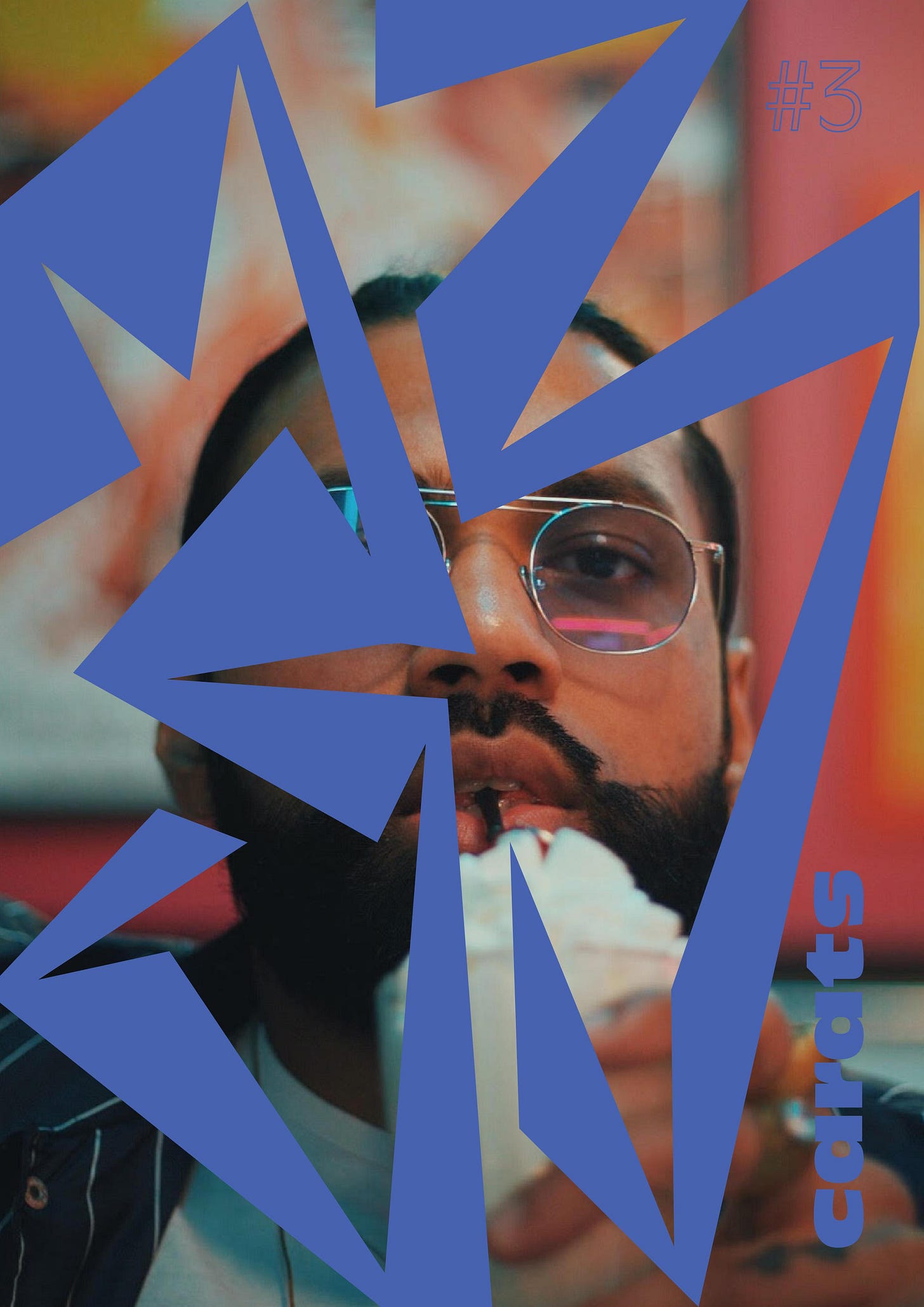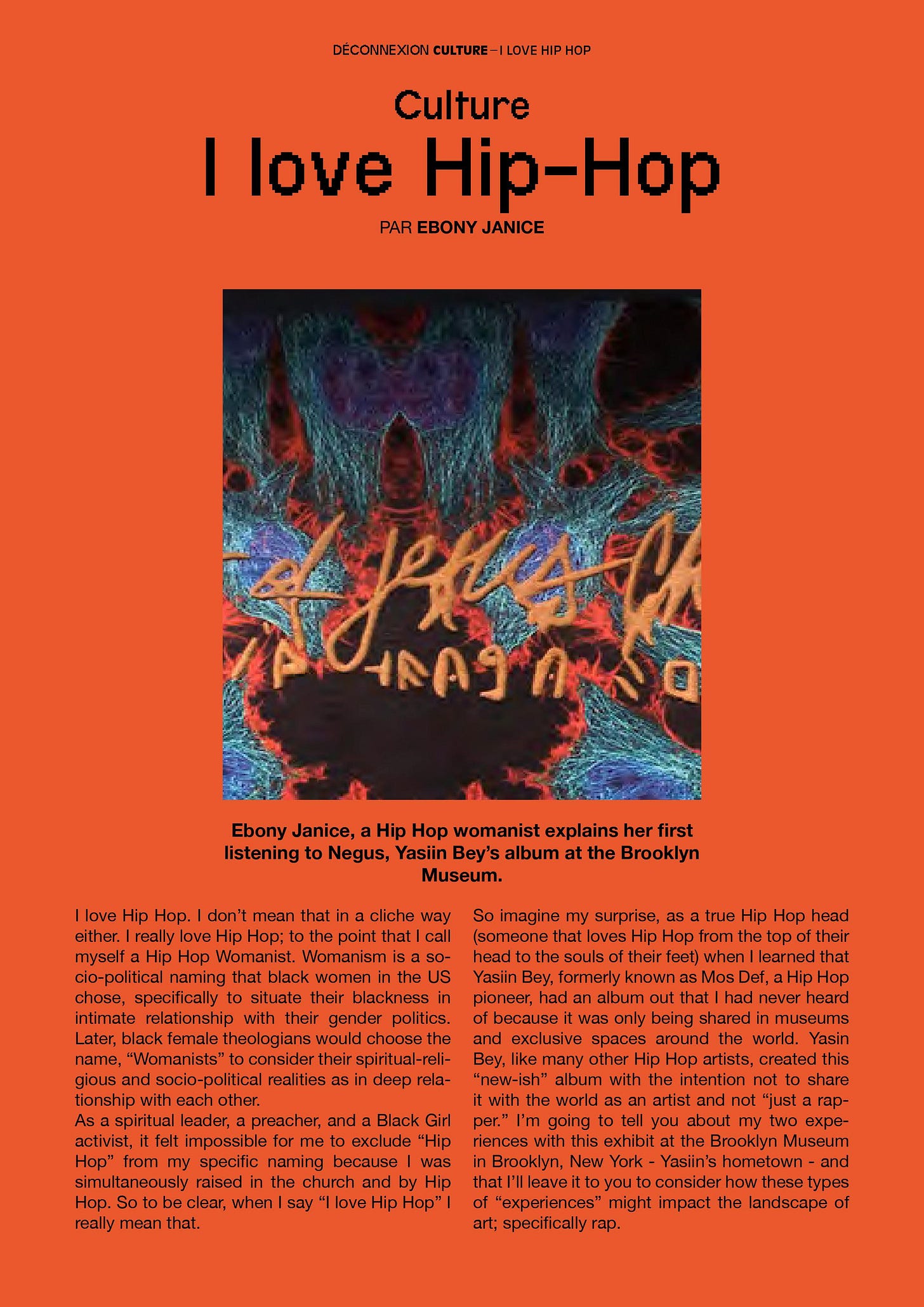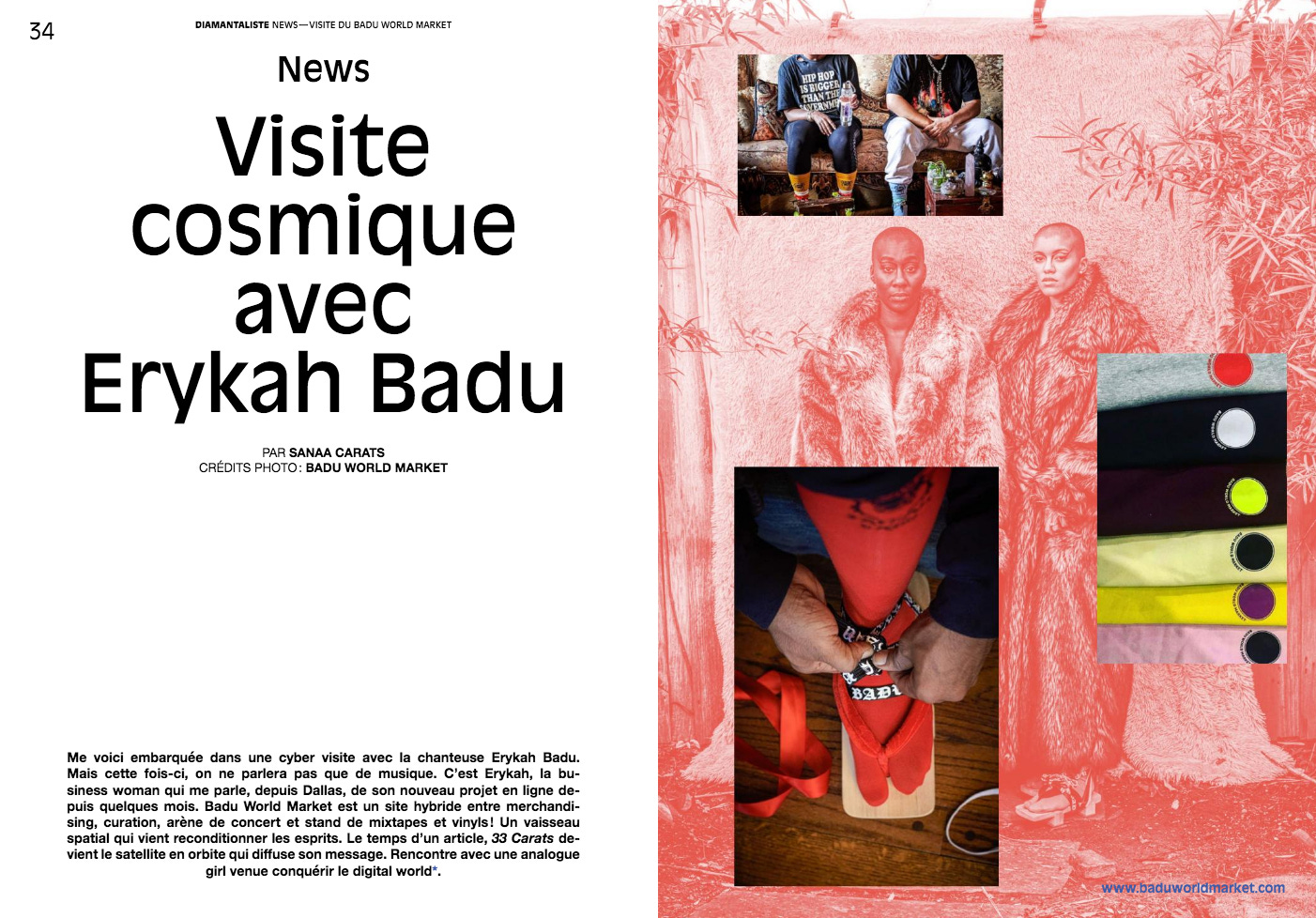Welcome to Shamira Explains It All/Shamira Explique Tout, a culture newsletter discussing the origins and impact of Black production and exchange, identity, and intellectual property via our digital, social, and archival discussions - and whatever else may be timely and interesting. Part English, Part French (la moitié est écrite en français, ou plus, si le thème du mois le demande). Reach out with feedback, suggestions, tips, and ideas at contact@shamirathefirst.com.
Sistas, how y’all feel? Brothas, y’all alright?
I originally wanted to launch this newsletter on my birthday - for a variety of reasons, that did not come to fruition. So I’m launching this on my mother’s birthday instead - a woman who as born in a country that had that to claw and fight for its independence from its oppressors, and continues to try to find its way. It grounds me in a sobering truth - eradicating the most visible oppressors is only the first step. But as Samuel Beckett wrote, “Ever Tried. Ever Failed. No matter. Try again. Fail again. Fail better.”
Over the past few days, cities across the United States have been rife with clashes between organizers, protesters, and their respective law enforcement forces. Some people are confrontational and others are not; all methods of protest are legitimate (including this amazing form of surveillance disruption by K-pop stans). Ultimately, the concept of a “peaceful” protest is a farce; it presumes opposing forces that do not seek to engage the community as enemy combatants. Corporations and businesses are not people, despite the fact that the Supreme Court opted to give them protections that treated them as such; but when discussing looting, keep in mind that there is record unemployment in a public health crisis with little to no social safety network to keep people afloat. As people have pointed out recently, Martin Luther King, in his advocacy for nonviolence, still expressed that “a riot is the language of the unheard:”
I think America must see that riots do not develop out of thin air. Certain conditions continue to exist in our society which must be condemned as vigorously as we condemn riots. But in the final analysis, a riot is the language of the unheard. And what is it that America has failed to hear? It has failed to hear that the plight of the Negro poor has worsened over the last few years. It has failed to hear that the promises of freedom and justice have not been met. And it has failed to hear that large segments of white society are more concerned about tranquility and the status quo than about justice, equality, and humanity. And so in a real sense our nation's summers of riots are caused by our nation's winters of delay. And as long as America postpones justice, we stand in the position of having these recurrences of violence and riots over and over again. Social justice and progress are the absolute guarantors of riot prevention.
With regards to how people discuss MLK and nonviolence in general, it is frequently misconstrued and decontextualized. I encourage people to listen to this clip from Bomani Jones’ ESPN Radio Show about the impetus behind MLK Day and the clarity of his actual message - that the greatest weapon he employed wasn’t pacifism, but shame.
In Brooklyn, near-unprecedented violence is ongoing in Fort Greene and Flatbush. It should not be lost on spectators that the nexus of brutality going on in Kings Country is happening around the Barclays Center - the source of its own violence on the Black community in Brooklyn. Gentrification and displacement go hand in hand with over policing and stop and frisk. I explored that in my piece for OkayPlayer
Lastly, I will just share my quick (and growing) thread on surveillance practices and ethics with journalism and organizing. It will be an ever expanding discussion as we continue to accept loss of privacy to the state and use of that data in a retaliatory manner, but one that we have to accept is a very present threat in the first place. This is an excerpt from an unpublished essay I wrote some time ago on surveillance and criminalization of Black communities:
Between the patterns of zeros and ones rests a minotaur for the digital age – amalgamating the sophistry of inherent Black criminality within a web of innovation that only serves as an anchor to longstanding pathologies. If we have any hope of a technological age that isn’t inextricably contracted to white supremacy, we would be well-suited to look at the threshold between mythology and history in order to reshape the way we think about applying harm reduction and racial equity. The surest way to get swallowed alive by a monster is to fail to realize that one is even there; and it is only by identifying that framework that we can begin to lay down the thread that will guide the perception of inherent Black criminality from the bowels of a modern digital labyrinth.
We have a long way to go to understand just how much data we have forfeited to third parties and actors that profit from participation in the prison industrial complex. A calculation can never supersede the inherent biases that it is introduced to and the fact remains that the carceral state was designed out of a pathology to funnel brown bodies into boxes. As Michelle Alexander points out in The New Jim Crow, “whiteness mitigates crime, whereas blackness defines the criminal.” The superimposition of automation belies this truth, but as Saidiya Hartman spoke to “a racial calculus and a political arithmetic that were entrenched centuries ago”, so has the digital model continued to reinforce the punitive history behind bars: it is all it knows, and therefore all it can be.
Playlist for the Month:
This month:
If you are uploading pictures of protestors or people organizing - use this tool to scrub metadata and blur peoples faces and other identifying features.
Try to contribute to vetted bail funds if you can. Here is a Twitter Thread with links to bail funds throughout the nation. (Important Note: The NYC Chapter has said they are overwhelmed by funds, so you may want to divert funds to local organizations in need of resources instead - like Equality for Flatbush’s mutual aid fund, so that they can continue investing in their police abolition organizing as well as community support)
For those who want to get involved but can’t take to the streets for various reasons (like myself, because of my immigration status) , here is a link to various to be in the struggle.
If you are interested in additional anti-carceral reading during this quarantine, for those of you who are just starting out - I encourage you to check out Angela Davis’ “Are Prisons Obsolete?”
This is a great 5-minute appearance from Cornel West on CNN worth checking out (where he references the Samuel Beckett quote above). Key takeaway: “It looks as if the system cannot reform itself. We’ve tried Black faces in high places - too often our Black politicians, professional class, middle class, become too accommodated to the the capitalist economy…”
Here is some legal guidance for those who are arrested in New York City.
Francophone Corner:
Découvrez le lancement de SUNU : Journal of African Affairs, Critical Thought + Aesthetics, une création de la brillante Amy Sall. SUNU Journal cherche à interroger, critiquer et célébrer le passé et le présent, tout en contribuant à une riche lignée de production intellectuelle, culturelle artistique africaine et afro-diasporique.
Check out the launch of SUNU: Journal of African Affairs, Critical Thought + Aesthetics the brainchild of the brilliant Amy Sall. SUNU Journal seeks to interrogate, critique and celebrate the past and the present, whilst contributing to a rich lineage of African and Afro-diasporic intellectual, cultural + artistic production.
Soutenons les médias indépendants ! Avec ce concept de « blingzine » bilingue (français/anglais), 33 Carats propose 106 pages de découvertes hip hop, lifestyle et mode par une équipe de passionnées. C’est le thème de la Déconnexion qui est exploré pour ce numéro avec des interviews d’experts sur les stratégies marketing des rappeurs français, une visite de Négus l’exposition/album de Yassin Bey par la journaliste américaine Ebony Janice. Mais le récit collaboratif fait de bling et de hip hop « Birkins and Drake » dont Life is Good le premier épisode est écrit par moi :) En bonus ; une interview exclusive d’Erykah Badu : pas mal pour un média indépendant !
Erykah Badu lance son site Badu World Market, Elle y propose des collections limitées hoodies et tee-shirts oversize en collaboration avec l’artiste canadienne Jackie Musial. A l'occasion du lancement de ce nouveau projet de la chanteuse, une interview exclusive par Sanaa Carats, fondatrice et rédactrice en chef du média, est disponible dans le numéro 3. Le rappeur français Cleim Haring en couverture.En attendant la version papier, En vente sur Issuu :
Support independent media! With this bilingual (French/English) "blingzine" concept, 33 Carats offers 106 pages of hip hop, lifestyle and fashion discoveries by a team of passionate people. Interviews with experts on the marketing strategies of French rappers, a visit to Négus exhibition/album by Yassin Bey by the American journalist Ebony Janice. But the collaborative fictional series of bling and hip hop "Birkins and Drake" of which Life is Good is the first episode is written by me :) As a bonus; an exclusive interview with Erykah Badu!
Erykah Badu launches her website Badu World Market, where she offers limited collections of hoodies and oversize tee-shirts in collaboration with Canadian artist Jackie Musial. On the occasion of the launch of this new project of the singer, an exclusive interview by Sanaa Carats, founder and editor-in-chief of the media, is available in this third issue. Buy it here.
Suivre sur Instagram: 33caratswebzine
Twitter: https://twitter.com/33caratswebzine
Facebook: https://www.facebook.com/33carats/




Alors, c’est tout. Sign up now so you don’t miss the next issue.
In the meantime, tell your friends!



